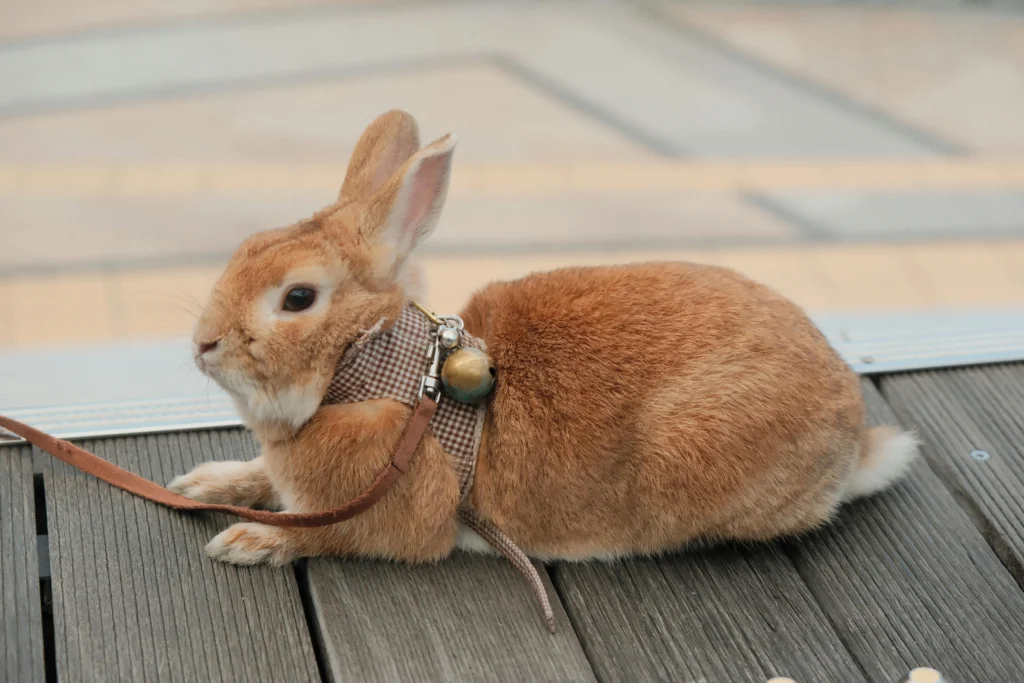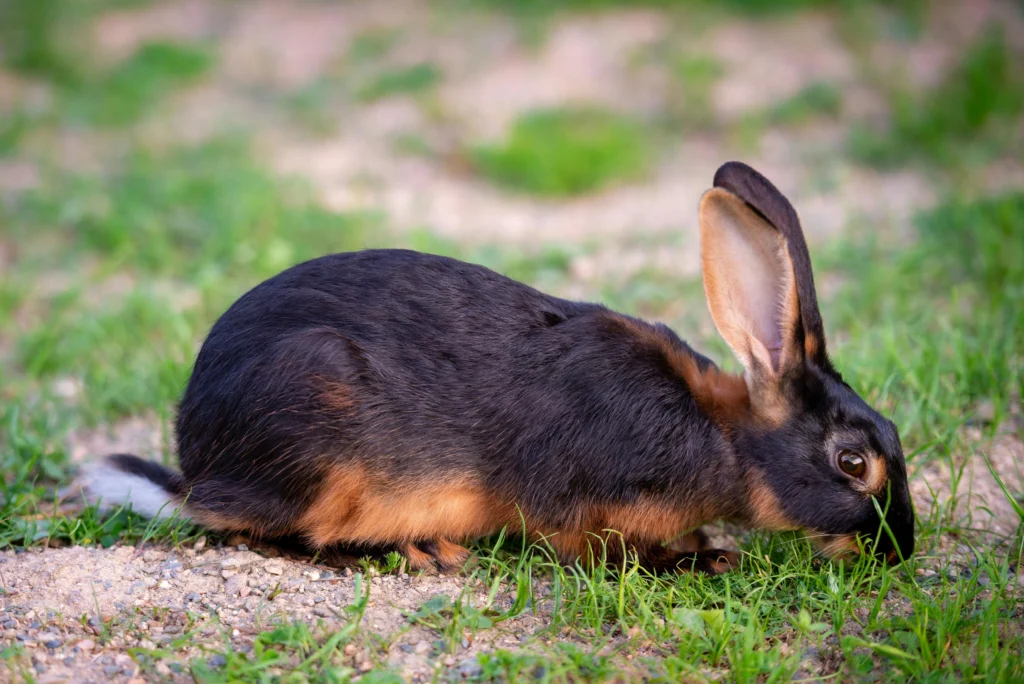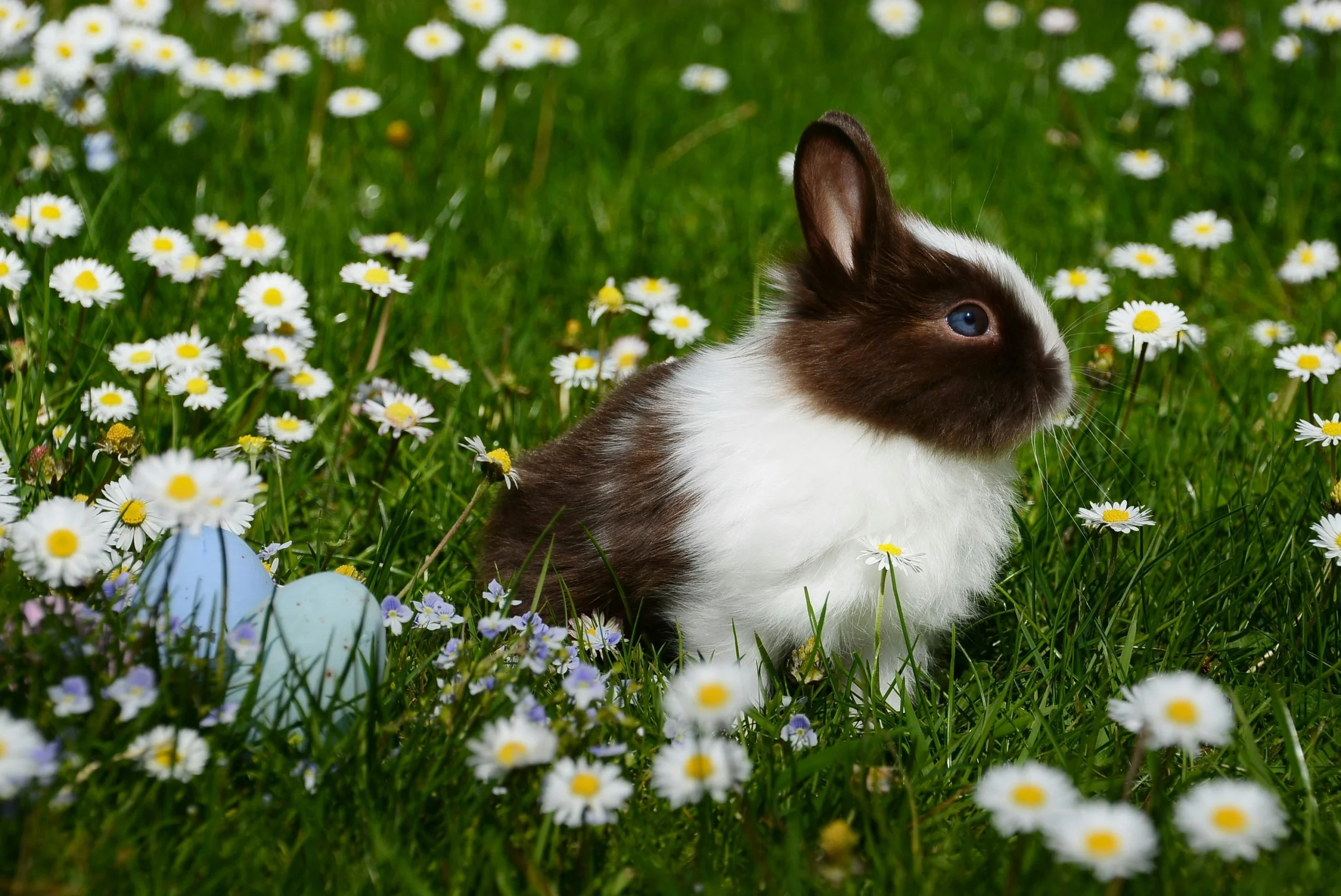How To Care for a Pet Rabbit
Introduction
Rabbits are among the most charming and lovable pets you can bring into your home. With their playful personalities, soft fur, and expressive eyes, it’s easy to see why so many people choose them as companions. However, unlike cats or dogs, rabbits have specific care requirements that every responsible pet owner must understand. If you’re considering adopting a bunny or already have one hopping around your home, learning how to care for a pet rabbit is essential for ensuring their happiness and longevity.
Taking care of a rabbit requires more than just giving it food and water. These intelligent animals require a clean, spacious environment, a balanced diet, mental stimulation, and regular social interaction. Many first-time rabbit owners are surprised to learn that rabbits are social creatures that can form deep bonds with their humans and even other pets. When their emotional and physical needs are met, rabbits can live long, fulfilling lives, often 8 to 12 years or more.

This guide on how to care for a pet rabbit will walk you through the fundamental aspects of rabbit care, including housing, nutrition, grooming, and health. Whether you’re preparing to bring a bunny home for the first time or seeking to improve your current rabbit care routine, this post will provide the essential knowledge you need. With the right care, your rabbit won’t just survive, they’ll thrive.
Let’s dive into the world of rabbit care and discover what it truly takes to keep your furry friend happy, healthy, and hopping for years to come.
Table of Contents
Creating a Safe and Comfortable Home
One of the most important aspects of learning how to care for a pet rabbit is setting up a living environment that meets their needs. A rabbit’s home isn’t just a place to sleep, it’s their safe haven, exercise space, and playground. Providing a clean, spacious, and secure habitat is essential for both their physical health and emotional well-being.
Start by choosing the right type of housing. Whether you opt for an indoor cage, a large exercise pen, or a free-roam setup, make sure the space is large enough for your rabbit to hop around, stretch out, and stand on their hind legs. The minimum recommended enclosure size is 4 feet long, 2 feet wide, and 2 feet tall, but bigger is always better. Wire-bottom cages should be avoided, as they can hurt your rabbit’s feet. Instead, choose solid flooring lined with soft bedding like hay, paper-based litter, or fleece liners.
Equally important is keeping your rabbit’s space clean. Remove soiled bedding daily and do a full clean-out once a week. A litter box can be placed in one corner of the enclosure, as rabbits can be easily litter-trained.
Don’t forget about rabbit-proofing if your bunny has free-roam time outside the cage. Cover electrical cords, block access to small spaces, and remove toxic plants or dangerous objects.
Providing a safe and stimulating environment is a key part of how to care for a pet rabbit. When their living area is clean, secure, and enriched with toys and hiding spots, your rabbit will feel more relaxed, confident, and active.
Proper Diet and Nutrition: Essential to Rabbit Care
One of the most important parts of learning how to care for a pet rabbit is understanding what they should eat every day. A rabbit’s diet has a direct impact on their digestion, teeth, and overall vitality. Unlike cats or dogs, rabbits have delicate systems that require specific foods to stay healthy.
The Ideal Daily Rabbit Diet
If you’re wondering what rabbits eat, the answer starts with hay. In fact, hay should constitute roughly 80% of your rabbit’s daily diet. Choose fresh, high-fiber options like timothy hay, orchard grass, or meadow hay. Hay keeps their digestive system moving and helps prevent overgrown teeth.
Next, add in fresh vegetables such as romaine lettuce, cilantro, basil, and parsley. These greens provide essential nutrients and variety. Start slowly when offering new veggies and always monitor for signs of digestive upset.
Pellets can be included as part of a balanced rabbit diet, but they should be given in moderation. Opt for high-quality rabbit pellets that don’t contain added seeds, nuts, or colorful bits. A small handful per day is enough for most adult rabbits.
Finally, always provide fresh water in a clean bowl or water bottle. Hydration is just as important as food in how to care for a pet rabbit.
Foods to Avoid for Rabbit Health
Never feed your rabbit iceberg lettuce, sugary fruits in large quantities, or processed snacks. Also, avoid bread, crackers, and cereals, as they can cause serious health issues.
In short, knowing what to feed (and what not to feed) is a crucial part of how to care for a pet rabbit responsibly. A healthy diet leads to a happy, energetic, and long-lived bunny.
Grooming and Hygiene: Daily Habits That Keep Your Rabbit Healthy
Part of knowing how to care for a pet rabbit is understanding the importance of regular grooming and hygiene. Even though rabbits are naturally clean animals, they still need your help to stay in top condition. Ignoring their grooming needs can lead to health issues such as matted fur, overgrown nails, or dirty living spaces that harbor harmful bacteria.
Brushing Your Rabbit’s Fur
Rabbits shed fur regularly, and without brushing, they can ingest hair while grooming themselves. This may lead to digestive blockages, which can be dangerous.
- Brushing once a week is typically sufficient for short-haired rabbits.
- Long-haired breeds, like Angoras, need daily brushing to prevent mats and tangles.
Use a gentle grooming brush designed for small pets. Always be soft and slow during brushing sessions to avoid stressing your rabbit.
Trimming Nails the Right Way
Rabbits’ nails grow quickly, and if left untrimmed, they can curl, break, or cause discomfort when walking.
- Trim their nails every 4–6 weeks.
- Use pet nail clippers and be careful to avoid cutting the quick, the sensitive area within the nail.
If you’re unfamiliar with trimming rabbit nails, it’s a good idea to have a vet guide you through the process the first time.
Clean Environment = Healthy Rabbit
A clean space is crucial in how to care for a pet rabbit. Remove dirty bedding each day and clean the litter box on a regular basis. A deep clean of the rabbit’s enclosure once a week helps control odor and prevent infections.
Maintaining a regular grooming and hygiene routine shows your dedication to your rabbit’s well-being and strengthens the bond you share.

Exercise and Mental Stimulation: Keeping Your Rabbit Active and Happy
If you’re serious about learning how to care for a pet rabbit, you need to prioritize more than just food and grooming. Physical activity and mental stimulation are key to a rabbit’s happiness and long-term health. Bored or inactive rabbits are more likely to develop behavioral issues or health problems like obesity and depression.
Why Daily Exercise Matters
Rabbits are naturally energetic and curious animals. They require space to hop, stretch out, and explore their surroundings.
- Aim for at least 3–4 hours of exercise per day outside the cage in a safe area.
- Use a rabbit playpen or rabbit-proofed room to allow free movement.
- Encourage movement with tunnels, ramps, and hideouts.
Daily exercise is essential for preventing joint stiffness, weight gain, and boredom-related behaviors like chewing or aggression.
Mental Stimulation for a Healthier Mind
Mental enrichment is a vital but often overlooked part of how to care for a pet rabbit. A rabbit’s brain needs as much attention as its body.
Try these enrichment ideas:
- Interactive toys like treat balls or puzzle feeders
- Chew-safe wooden blocks to satisfy natural instincts
- Cardboard boxes or paper bags provide great opportunities for hiding and exploring.
- Training sessions using positive reinforcement and small healthy treats
Switching up toys and play items regularly keeps things interesting. Rabbits are intelligent animals and thrive in environments that challenge their senses and curiosity.
By making exercise and enrichment a daily routine, you’re fulfilling one of the most rewarding parts of how to care for a pet rabbit, keeping them both physically and mentally stimulated. A happy rabbit is a healthy rabbit.
Safe Housing and Living Environment: Creating a Secure Space for Your Bunny
Understanding how to care for a pet rabbit goes far beyond feeding and grooming, providing a safe and comfortable living space is just as essential. Whether you’re keeping your rabbit indoors or outdoors, their habitat should be clean, secure, and enriched to meet their physical and emotional needs.
Indoor Rabbit Housing: Comfort and Safety First
Many pet owners choose to house rabbits indoors to protect them from weather extremes and predators. A spacious indoor rabbit cage or x-pen enclosure gives your bunny enough room to move freely.
- Make sure the enclosure is at least four times larger than your rabbit’s full stretched length.
- Use soft, absorbent bedding such as recycled paper or hay.
- Provide a designated litter area with rabbit-safe litter to promote hygiene.
Place the enclosure in a quiet, well-ventilated area, away from direct sunlight and loud noises. Rabbits feel safest in peaceful environments.
Outdoor Rabbit Hutch Setup: Secure and Weatherproof
If you prefer keeping your rabbit outdoors, a weather-resistant rabbit hutch with a solid floor and a sheltered sleeping area is vital.
- Make sure it’s predator-proof with secure locks and sturdy wire mesh.
- Raise the hutch off the ground to prevent dampness and cold.
- Add shade during hot weather and insulation during winter months.
Clean the living area regularly to avoid odors and reduce the risk of disease. A clean, safe environment is a key part of how to care for a pet rabbit and helps prevent stress-related health issues.
Creating the right habitat ensures your rabbit feels secure and comfortable, forming the foundation for a happy, healthy life.

Social Needs and Bonding: Building a Trusting Relationship with Your Rabbit
One of the most fulfilling parts of learning how to care for a pet rabbit is developing a strong and trusting bond with your furry friend. Rabbits are social creatures that crave interaction, affection, and companionship. Meeting their emotional needs is just as important as caring for their physical health.
Understanding Rabbit Social Behavior
Rabbits are naturally curious, affectionate animals, but they can also be timid, especially when introduced to a new environment or person. They may not enjoy being held at first, but with patience, they’ll learn to trust you.
- Approach your rabbit gently and from their eye level.
- Allow them to come to you instead of forcing interaction.
- Offer small treats to create positive associations.
Recognizing body language is key. A relaxed rabbit may stretch out or gently nudge you, while a nervous one may hide or thump its hind legs.
Bonding with Your Rabbit
Spending daily time together strengthens your relationship. Gentle petting, hand-feeding, or simply sitting near them can go a long way.
- Avoid loud noises and sudden movements.
- Try clicker training for mental stimulation and trust-building.
- Be consistent, rabbits thrive on routine and familiarity.
If you’re considering a second rabbit, bonding should be done slowly and under supervision. Some rabbits form lifelong friendships, which is great for companionship when you’re not around.
Understanding this aspect of how to care for a pet rabbit enhances their quality of life. A socially fulfilled rabbit is less likely to develop anxiety, depression, or destructive behaviors.
By meeting your rabbit’s emotional needs, you’re not only providing proper care, you’re also nurturing a lifelong bond built on love and trust.
Common Health Issues and Preventive Care: Keeping Your Rabbit Healthy
A vital part of understanding how to care for a pet rabbit is knowing how to prevent and recognize common health problems. Rabbits can suffer from a variety of medical conditions, many of which can be managed or avoided with proper care, regular monitoring, and early intervention.
Recognizing Rabbit Health Problems
As prey animals, rabbits have an instinct to hide any signs of illness. As a result, even minor symptoms can indicate serious underlying issues. Daily observation is key.
Watch for these warning signs:
- Sudden loss of appetite or weight
- Runny nose or eyes
- Diarrhea or irregular droppings
- Lethargy or hiding more than usual
- Head tilt or loss of balance
These symptoms may point to issues such as GI stasis, dental disease, or respiratory infections common health concerns in rabbits.
Preventive Veterinary Care for Rabbits
Routine checkups with a rabbit-savvy veterinarian are essential. Schedule at least one wellness exam per year, or more often for aging rabbits.
Here’s how preventive care plays a key role in properly caring for a pet rabbit:
- Dental checks: Rabbits’ teeth never stop growing and can cause pain or infection if not monitored.
- Vaccinations (depending on your region) may protect against deadly viruses like myxomatosis or rabbit hemorrhagic disease.
- Parasite control: Fleas, mites, and worms can affect both indoor and outdoor rabbits.
Maintaining a clean environment, providing a balanced diet, and minimizing stress all play roles in illness prevention.
By prioritizing preventive care, you’re not only addressing health risks early, but you’re also taking proactive steps in learning how to care for a pet rabbit in the most responsible way.
Conclusion: Your Guide to Lifelong Rabbit Care
By now, you have a complete overview of how to care for a pet rabbit, from feeding and grooming to providing emotional support and preventive health care. Rabbits may be small, but the level of care they require is both meaningful and rewarding. Being a responsible rabbit owner means committing to their daily needs and long-term well-being.
Understanding the basics of how to care for a pet rabbit, such as choosing the right diet, ensuring proper housing, maintaining hygiene, and encouraging daily exercise, helps prevent common issues and supports a healthy, active lifestyle. Rabbits thrive when they feel safe, loved, and mentally stimulated, making it essential to provide both physical space and emotional enrichment.
If you’re serious about how to care for a pet rabbit, don’t overlook the importance of regular veterinary checkups and early detection of health problems. Rabbits can’t vocalize pain, so observation and proactive care are crucial.
Remember, adopting a rabbit means more than just providing food and shelter, it’s about forming a meaningful bond. By spending quality time, offering affection, and creating a consistent routine, you’ll strengthen the relationship and ensure your rabbit lives a happy, stress-free life.
With the right knowledge and commitment, how to care for a pet rabbit becomes second nature. Whether you’re a first-time bunny parent or looking to improve your current rabbit care routine, these tips will help you raise a healthy, loving companion for years to come.
Start today by applying what you’ve learned and giving your furry friend the care they truly deserve.
Frequently Asked Questions About How To Care for a Pet Rabbit
What is the first step in learning how to care for a pet rabbit?
The first step in caring for a pet rabbit is setting up a safe and cozy living environment. This includes providing a spacious enclosure with proper bedding and constant access to fresh water and high-quality hay. Understanding their natural behaviors and needs sets the foundation for responsible rabbit ownership.
How important is diet in caring for a rabbit?
Diet plays a crucial role in how to care for a pet rabbit. Rabbits require a diet mainly consisting of fresh hay, supplemented with leafy greens and a small portion of pellets. Avoid giving sugary treats and foods that are high in starch. A balanced diet supports digestion and dental health, which are common concerns in rabbits.
How frequently should I clean my rabbit’s habitat?
Cleaning frequency is a key part of how to care for a pet rabbit effectively. Remove soiled bedding and droppings daily to maintain hygiene and prevent odors. Perform a thorough cleaning of the entire habitat weekly, using gentle, non-toxic cleaners to keep your rabbit’s environment healthy and comfortable.
Can rabbits live happily as indoor pets?
Yes! Keeping rabbits indoors is often safer and allows for better social interaction. Indoor rabbits enjoy the advantages of stable temperatures and safety from predators. To excel at how to care for a pet rabbit indoors, make sure to provide ample exercise space, chew toys, and a quiet, secure area for rest.








One Comment